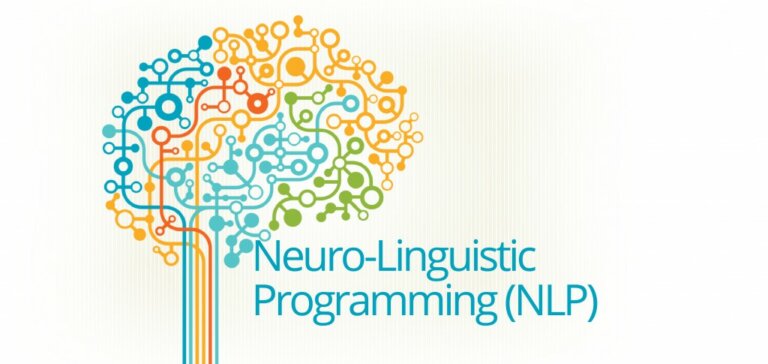Introduction to Neuro-Linguistic Programming (NLP)
Neuro-Linguistic Programming, or NLP, is a psychological approach that focuses on the relationship between language, behavior, and the brain. Developed in the 1970s, NLP aims to understand and replicate the thought processes and behaviors of successful individuals in order to help others achieve similar results.
It is often used in fields such as therapy, coaching, and personal development, with the goal of improving communication, overcoming fear and anxiety, and achieving specific goals. While NLP has been met with some controversy and criticism, its supporters argue that it is a powerful tool for personal and professional growth.
In this article, we will delve into the world of NLP and explore the main principles of NLP, how it works, and its various applications and benefits. We will also look at the history of NLP and the science behind its effectiveness. Whether you are new to NLP or simply want to learn more about it, this article will provide a comprehensive introduction to this fascinating field.
How NLP Works
The importance of language in shaping our thoughts and actions
Neuro-Linguistic Programming operates on the belief that the words we use and the way we communicate can greatly affect our thoughts and behaviors. It suggests that the language we use creates a neural pathway in the brain that shapes our perception of the world and influences our actions. By altering our language and the way we communicate, we can change the neural pathways in our brain and therefore change our thoughts and behaviors.
In NLP, communication is seen as a three-part process involving the speaker, the message, and the listener. The speaker sends a message through verbal and nonverbal cues, which is then received and interpreted by the listener. NLP practitioners believe that by understanding and manipulating this process, they can influence the thoughts and behaviors of the listener.
Perception also plays a crucial role in NLP. It is believed that each individual has their own unique model of the world, which is shaped by their personal experiences, beliefs, and values. By understanding and altering an individual’s perception, NLP practitioners aim to help them see the world in a new way and make positive changes in their thoughts and behaviors.
The three main components of NLP: language, neurology, and programming
As mentioned earlier, Neuro-Linguistic Programming is based on the idea that language, behavior, and the mind are interconnected. It consists of three main components: language, neurology, and programming.
Language refers to the words we use and the way we use them. NLP practitioners believe that the words we choose and the way we structure our sentences have a powerful impact on our thoughts, emotions, and actions.
Neurology refers to the way our brains process information. NLP aims to understand how our brains take in, store, and retrieve information, and how we can use this knowledge to improve our learning and communication skills.
Programming refers to the patterns of thought and behavior that we develop over time. These patterns, or “programs,” are shaped by our experiences, beliefs, and values. NLP aims to help individuals identify and change negative or limiting thought patterns in order to achieve their goals and live a more fulfilling life.
Techniques used in NLP
There are various techniques used in NLP, such as reframing and anchoring, which are designed to help individuals change their thought patterns and behaviors.
- Reframing: Changing the way we perceive and interpret a situation or event in order to change our emotional responses and actions.
- Anchoring: Creating an emotional or physical response to a specific trigger or cue in order to access positive feelings and behaviors more easily in the future.
- Modelling: Analyzing and replicating the successful behaviors and thought patterns of others.
- Submodalities: Identifying and altering the specific details and qualities of our thoughts and memories.
- Metaphor and storytelling: Using stories and metaphors to communicate ideas and facilitate change.
- Presuppositions: Assuming certain beliefs and attitudes as a foundation for communication and change.
- Sensory acuity: Increasing awareness of and sensitivity to verbal and nonverbal cues.
- Pacing and leading: Matching and leading another person’s verbal and nonverbal communication in order to build rapport and facilitate change.
- Outcome setting: Clearly defining and focusing on specific goals in order to achieve desired results.
These are just a few examples of the techniques used in Neuro-Linguistic Programming. As we will see later in this article, there are many other tools and techniques that NLP practitioners use to help individuals achieve their goals and overcome challenges.
The History of NLP
NLP was founded in the 1970s by Richard Bandler and John Grinder, two young researchers who were interested in the connection between language and behavior.
Bandler, a student of mathematics and computer science, was initially drawn to NLP after reading a book by Fritz Perls, the founder of Gestalt therapy. Perls’ approach, which focused on the present moment and the role of language in shaping our experience, resonated with Bandler and sparked his interest in the relationship between language and behavior.
Grinder, a linguist, was also interested in the connection between language and behavior. He saw language as a tool for understanding and influencing the way people think and behave. Together, Bandler and Grinder began studying the language patterns of successful therapists and communicators, such as Perls and Virginia Satir, in order to understand how they were able to achieve such successful results with their clients.
Through this process, known as “modelling,” Bandler and Grinder developed a set of tools and techniques that could be used to replicate the success of these individuals. These tools and techniques, which came to be known as Neuro-Linguistic Programming, or NLP, focused on the connection between language, behavior, and the mind, and aimed to help individuals overcome challenges, improve their communication skills, and achieve their goals.
Since its inception, NLP has evolved and grown in popularity. It has been embraced by therapists, coaches, trainers, and educators around the world, and is now used in a wide range of settings, including business, education, and sports.
The Science Behind NLP
The effectiveness of Neuro-Linguistic Programming as a therapeutic and personal development tool has been the subject of much debate and research. Some studies have found NLP techniques to be effective in reducing anxiety and improving communication skills.
One study published in the Journal of Clinical Psychology found that NLP was effective in reducing anxiety in a group of dental phobia patients. Another study published in the Journal of Counseling Psychology found that NLP was effective in improving communication skills in couples undergoing relationship counseling.
Some studies have also looked at the physiological changes that occur in the brain during NLP techniques. For example, a study published in the Journal of Neurolinguistics found that NLP techniques such as anchoring and reframing produced changes in brain activity as measured by electroencephalography (EEG).
The Benefits of NLP
Neuro-Linguistic Programming has a wide range of benefits, both in personal and professional settings. Some of the main benefits of NLP include:
- Improving communication skills: NLP techniques can help individuals become more effective communicators by teaching them to understand and respond to the verbal and nonverbal cues of others. This includes learning how to listen actively, express oneself clearly and persuasively, and understand and respond to the needs of others.
- Greater self-awareness and personal development: NLP helps individuals become more self-aware and better understand their own thoughts, beliefs, and behaviors. This can lead to greater personal growth and development.
- Overcoming fear and anxiety: NLP techniques such as visualization and reframing can help individuals overcome fear and anxiety by changing their perception of the fear-inducing event or situation.
- Increased confidence and resilience: NLP techniques can help individuals overcome negative thought patterns and build confidence in their abilities. This can increase resilience and help individuals handle challenges and setbacks more effectively.
- Goal setting and achievement: NLP can help individuals set and achieve their goals by teaching them to identify and overcome any limiting beliefs or behaviors that may be holding them back.
- Conflict resolution: NLP techniques can be used to improve communication and understanding in conflict situations, leading to more productive and positive outcomes.
- Enhanced leadership and problem-solving abilities: NLP can help individuals develop strong leadership skills and become more effective problem-solvers. It can also help leaders communicate more effectively with their team and create a positive and productive work environment.
These are just a few examples of the many benefits of NLP. NLP has a wide range of applications and can be a valuable tool for personal and professional growth.
Real-Life Applications of NLP
Neuro-Linguistic Programming has a wide range of real-life applications and can be used in a variety of settings, including:
- Coaching: NLP is often used in coaching to help individuals set and achieve their goals, overcome challenges, and improve their performance. It can be used in business coaching, executive coaching, and personal development coaching, among others.
- Therapy: NLP can be used in therapy to help individuals overcome negative thought patterns and behaviors and improve their mental health. It is often used in conjunction with other therapeutic approaches, such as cognitive-behavioral therapy (CBT) and hypnotherapy.
- Business: NLP can be used in business to improve communication, negotiation skills, and leadership. It can also be used to help teams work more effectively and achieve better results.
- Education: NLP can be used in education to help students learn more effectively and overcome learning challenges. It can also be used to improve teacher-student communication and create a positive learning environment.
- Sports: NLP can be used in sports to help athletes improve their performance, overcome mental barriers, and achieve their goals.
These are just a few examples of the many ways in which NLP can be applied in real-life settings. It is a versatile tool that can be used to achieve a wide range of personal and professional goals.
Conclusion
In conclusion, Neuro-Linguistic Programming (NLP) is a psychological approach that focuses on the connection between language, behavior, and the mind. It aims to understand how we process information and how we can use language to change and shape our thoughts, emotions, and actions.
NLP was founded in the 1970s by Richard Bandler and John Grinder, and has evolved and grown in popularity over the years. While the effectiveness of NLP has been the subject of debate, some research suggests that it can produce physiological changes in the brain and be effective in improving communication skills, reducing anxiety, and achieving specific goals. NLP is commonly used in therapy, coaching, and personal development, and has also been applied in fields such as sports, the workplace, and addiction recovery.
Overall, the potential of Neuro-Linguistic Programming as a tool for personal and professional growth should not be underestimated. Whether you are looking to improve your communication skills, overcome challenges, or achieve your goals, NLP can be a valuable resource. By understanding and manipulating the connection between language, behavior, and the brain, individuals can make positive changes in their thoughts, behaviors, and overall well-being.



